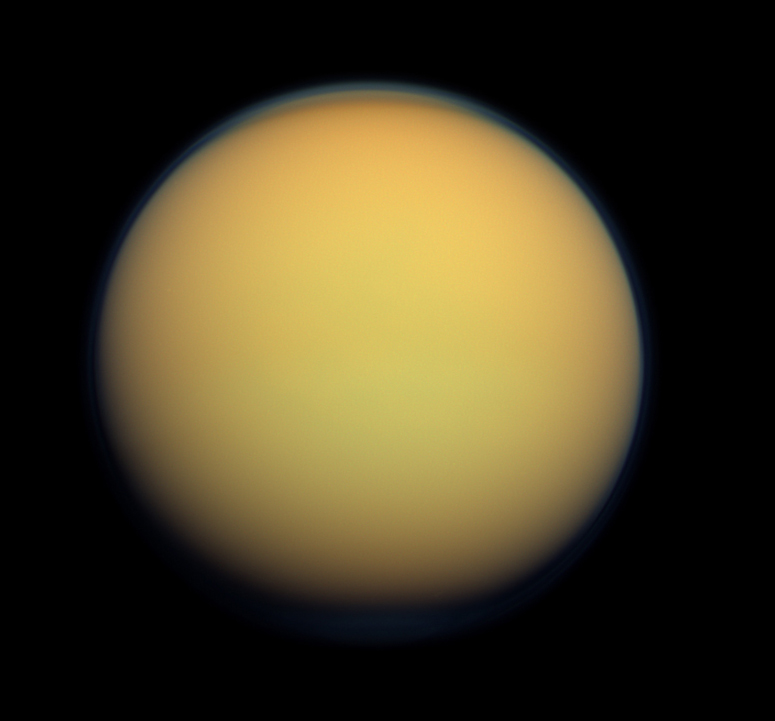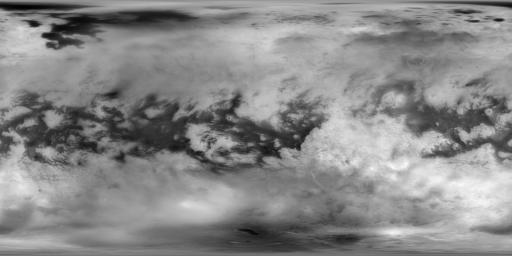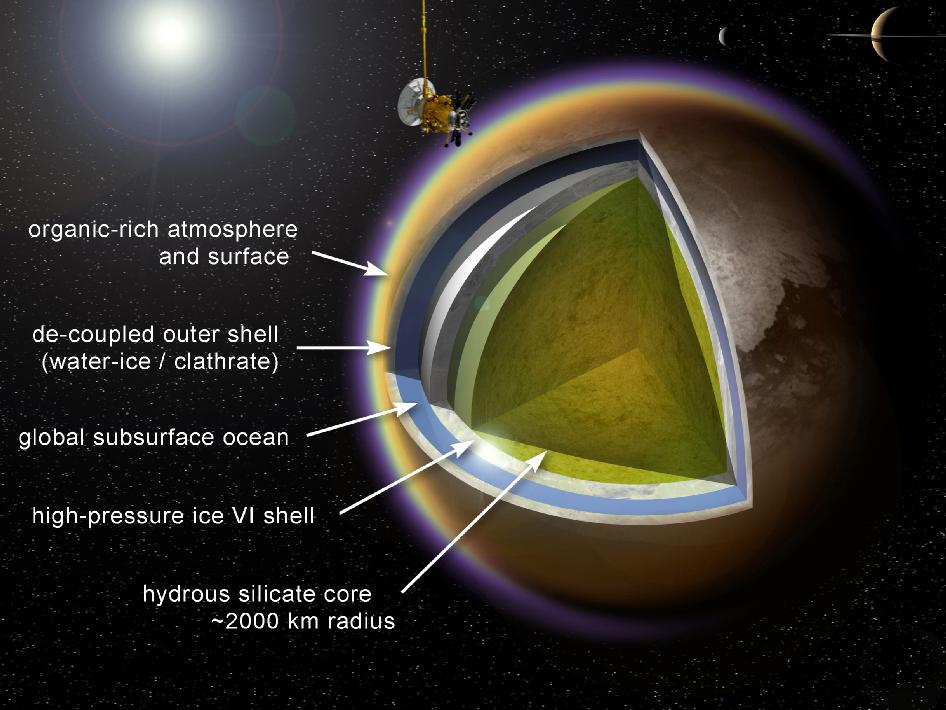Our Knowledge of Titan
The two Voyager spacecraft observed Titan in 1979 and 1980, but the organic haze in the atmosphere obscured the surface at visible wavelengths. The Hubble Space Telescope imaged Titan at longer near-infrared wavelengths in 1994, revealing large bright and dark regions on its surface. However, the details of Titan's surface landforms remained a mystery until July 2004, when NASA's Cassini spacecraft arrived. Cassini used radar and imaging at near-infrared wavelengths to glimpse what lies below the hazy atmosphere. During more than 100 close flybys, the Cassini orbiter mapped much of Titan's surface and made detailed studies of its atmosphere. Cassini also delivered the Huygens probe, which in 2005 parachuted safely down to Titan's surface, measured winds and the atmosphere, and imaged a small region of the surface in close-up detail. Cassini's observations also pointed to a salty ocean beneath the moon's water-ice crust, thus earning Titan the label of an "ocean world."
Cassini showed us that Titan's surface has rivers, lakes, and even seas of liquid ethane and methane (the main component of natural gas), as well as vast expanses of sand dunes. The climate of Titan is such that the methane can form clouds and even rain, as water does on Earth. Titan's atmosphere is four times denser than Earth's and its gravity is about 1/7th of Earth's; this combination means Titan's raindrops fall much slower than Earth's. Rainfall on Titan is rare – it may be centuries between showers at a given location.
Titan's atmosphere is composed primarily of nitrogen (about 95%), with some methane (about 5%) and small amounts of other carbon-rich compounds. When exposed to sunlight, the methane and nitrogen molecules are split apart by ultraviolet light and recombine to form a variety of complex organic compounds. Organic molecules are the building blocks for life, and their presence on Titan adds to its intrigue – what compounds are on Titan, and what might they form?
Ocean Worlds
As an ocean world, Titan offers a rare opportunity to explore the origins of prebiotic chemistry outside of Earth's environment. NASA's Ocean Worlds mission theme focuses on characterizing potential habitability, examining prebiotic chemistry, and searching for signs of life. Titan's unique combination of abundant, complex, carbon-rich chemistry on its largely water-ice surface makes it an ideal location for such investigations.






